How to feed a baby cardinal
How to Care for Baby Cardinals?
Cardinals are beautiful songbirds that are found in the Americas. These birds mark their territories with their songs.
You may learn to recognize a cardinal’s song. Unfortunately, like all other birds, cardinal nests can be destroyed due to felling, storms, or attacks by predators.
Wildlife rehabilitation facilities receive innumerable baby cardinals every year, especially during nesting season.
Often people are unable to identify baby cardinals and wrongfully assume that the baby needs help. People are also often unaware of how to take care of these babies properly.
Baby cardinals are challenging to identify because they look nothing like adult cardinals. Identifying baby cardinals accurately is vital so that you can take proper care of them.
Table of Contents
How to Recognize a Baby Cardinal?
Adult cardinals are easy to recognize since they are incredibly bright.
Baby cardinals are devoid of feathers and are gray. They don’t have crested-chest like their parents.
You should know how to identify cardinal babies if you find a featherless gray baby near a tree.
What Does the Nest Look Like?
Cardinal nests are found between forks of tree branches.
They build their nests in four layers made of twigs, leaves, the bark of grapevines, and grass and pine needles.
These nests are quite small and only four inches in diameter.
What Do the Cardinal Eggs Look Like?
If you see any remnants of eggshells in the nest, you can observe them to identify if the babies are cardinal.
Cardinal eggs are smooth and glossy.
They are pale blue or greenish and are often speckled with brown, gray, or purple.
The eggs should be about an inch in length.
The Feathers, the Beak, and the Mouth
The pin feathers of a baby cardinal will be rust-brown and will eventually mature into the bright color of the adults.
The beak of the cardinals will be conical in shape and wide because cardinals are seed eaters.
The beaks should be black, which turns orange-red as the cardinals mature. The insides of their mouth will be pink.
How To Determine if the Baby Cardinal Needs Help
Not all cardinal babies that you see on the ground will require help.
Here is a quick guide to determine whether you should rescue the baby:
Fledglings
Feathered babies are called fledglings. They are at a stage where they may be learning how to fly. A cue could be the presence of an adult cardinal nearby or in a nest.
Search thoroughly to see if you can spot a cardinal. Leave the baby alone if you find the parents watching closely nearby.
If you don’t find a parent, you may wait and see what happens. The parents will usually return in a while if they have gone to search for food.
Fuzzy Baby Cardinal
If the baby is fuzzy and hasn’t developed feathers, you may try to return the baby to the nest.
Watch for a while to see if the mother accepts the baby. Cardinals aren’t known to reject their young, but it is still possible.
Cardinals aren’t known to reject their young, but it is still possible.
If the Parents are Dead, Missing, or Rejected the Baby
If its parents have rejected the baby or if you see a pair of dead cardinals nearby, you may call a wildlife rescue center and keep the baby safe and warm meanwhile.
Shred some old newspapers and place them in a box. You can add some pieces of old cloth to generate some warmth for the baby.
You can add a heating pad on a low setting or a heating lamp a little farther away from the baby.
Cardinals sit on their babies for a few days after they are born, and you will need to replicate their warmth. You should hand over the baby cardinal to wildlife rescue centers.
But if you don’t have a wildlife rescue center nearby or can’t seem to reach them, you may raise the baby on your own.
How to Handle a Baby Cardinal
Baby cardinals are incredibly fragile. You can easily hurt them if you’re not careful. BE extremely gentle when handling babies.
Please don’t pick them up with their heads, legs, or wings.
Cup the babies in both of your hands and if the baby tries to squirm and escape, hold the lower neck of the baby down using your thumb and forefinger.
Be extremely gentle when handling baby birds because you can permanently injure them.
Immediately place the cupped bird in a box but place something soft inside first. The baby’s legs can get injured if the box is hard.
How to Feed a Baby Cardinal and Take Care of It
Extremely young babies will need to be a fed a blended diet with a dropper. As they grow, cardinal babies can be fed solid foods with tweezers.
Foods that you can feed baby cardinals include soft fruits such as grapes and berries, store-brought baby parrot food, mashed cat or dog food soaked in water overnight.
You can ask a vet for guidance if you are unsure of what to feed the baby.
Don’t feed the baby water because its hydration needs will be fulfilled by the wet food you feed.
The baby cardinals will need to be fed every 15 to 30 minutes or whenever they gape their beaks for food.
This isn’t easy because the baby needs constant attention, even through the night! You might wake up to a crying baby quite a few times throughout the night.
But taking care of a baby bird can be very satisfying.
Changing the Bedding
Change the bedding of the carton in which you are keeping the cardinal regularly.
If bacteria or fungus develop in the bedding, the baby cardinal can quickly get sick.
Don’t use hay to line up the box because hay and straw can be breeding grounds for numerous microorganisms.
When the baby starts to feather, move it to a bigger cage and place tree branches in it. You can place solid foods on the branches and in the enclosure.
Cardinals like to feed on insects, seeds, grains, and berries.
Cardinals will eat any seeds, and the choice of seeds is not limited, but you can try sunflower, safflower, weed seeds, or any other seeds commonly found in the wild in your area.
Do not feed bread or milk to the baby cardinal. Buy mealworms from a local pet store to feed the baby cardinal.
Cardinals need fat and protein-rich diets, which mealworms readily provide.
How to Make the Transition to the Wild Smooth
Make sure that you feed the bird a diet that can also be found in your area so that when you release the baby, it can easily find food based on what you’ve been feeding it.
If you feed the baby food usually not found in your area, the baby will not learn to recognize appropriate food and die of starvation when released.
When the cardinal has grown feathers and is flying around in the cage, it is time for it to fly away. Cardinals belong in the wild and not in homes.
Once you are ready to release the baby and have said your goodbye, leave the door of the cage open in the outdoors so that the cardinal can explore the surroundings but still return for food and water when it is thirsty or hungry.
Initially, the cardinal may return to the cage frequently to feed itself.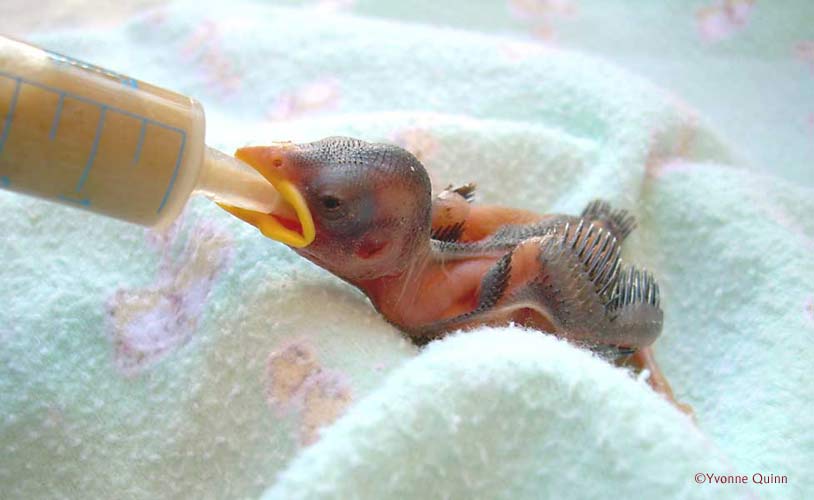 Soon, you might not see the cardinal for a few days at a time.
Soon, you might not see the cardinal for a few days at a time.
This means that the baby has successfully transitioned to the wild.
You will need to release the baby into the wild once it starts to feather. Keeping wild birds is illegal in America, and you could get in trouble for it.
You might get attached to your baby, but the cardinal should be released into the wild and find new friends and family.
Final Words
Taking care of vulnerable creatures is indeed a noble act of kindness that can be rewarding in more ways than you may know.
It creates a sense of happiness and fulfillment when you watch these babies grow so quickly and fly away to build homes. It may also be a priceless teaching experience for your kids.
If you live in an area where songbirds are frequently heard and seen, you might happen to find a baby bird in need of care.
Keep an eye out during nesting season and pay attention to any desperate baby bird calls.
Other articles you may also like:
- 12 Easy Ways to Attract Cardinals (Species-Specific Tips)
- Robin vs Cardinal – What the Difference?
- How to Care for Baby Sparrow?
- How to Tell If a Mother Bird Has Abandoned Her Nest?
- What Can You Feed A Baby Bird? Do’s and Dont’s!
- What to Do if You Find a Baby Bird?
How to Care for Wild Cardinal Baby Birds
By Sarah Goodwin-Nguyen | Updated September 26, 2017Things You'll Need
Margarine tub or basket
Box
Heat lamp or pad
Shredded newspaper
Rolled up cloth
Baby bird mash
Eyedropper / Tweezers
Large outdoor enclosure
Every year, wildlife rehabilitation facilities are presented with hundreds of baby cardinals. Some are accidentally "birdnapped" by people who assume a baby bird on the ground needs their help. Others are mishandled by well-meaning people who have no idea how to properly care for a baby cardinal. If you find a baby bird, be certain it needs your help before interfering. Then, find a licensed wildlife rehabilitator. If you are a vet or rehabilitator, or there are none in your area and you must care for the bird yourself, be prepared for the hard work ahead of you.
Some are accidentally "birdnapped" by people who assume a baby bird on the ground needs their help. Others are mishandled by well-meaning people who have no idea how to properly care for a baby cardinal. If you find a baby bird, be certain it needs your help before interfering. Then, find a licensed wildlife rehabilitator. If you are a vet or rehabilitator, or there are none in your area and you must care for the bird yourself, be prepared for the hard work ahead of you.
Determine if the Baby Cardinal Needs Help
Observe whether the bird is fuzzy or feathered. If the bird is feathered, it is a fledgling and is on the ground learning to fly. The parents are still caring for it. Leave it alone, or if it is in a place where humans, dogs or cats pose a threat, move it to a low tree branch nearby.
If the bird is fuzzy, but the parents are around, try to return the baby to its nest or construct a new nest out of a margarine tub (with holes for drainage) or a basket and some grass. Hang the new nest in a shady spot in a tree near the old nest and observe.
Hang the new nest in a shady spot in a tree near the old nest and observe.
Call a licensed wildlife rehabilitator in your area if the parents are dead, missing or have rejected the baby. Until you can get the bird to the rehabilitator, keep it in a quiet, warm place. Do not try to feed the bird.
If You Must Raise a Baby Cardinal
Place the baby cardinal in a box filled with shredded newspaper and/or rolled up cloth to simulate a nest. Keeping the baby on a flat surface may cause a muscular deformity called "splay legs." Change the bedding daily.
Keep the baby warm. Provide a heat lamp several feet away from the baby's box, or a heating pad set on low underneath the baby's box.
Make a mash of three-quarters dry dog or cat food soaked in water overnight in the refrigerator. The other fourth of the mash should be made up of soft fruits (berries and seedless grapes) and a grain mixture for baby birds such as Kaytee Exact Hand-Feeding Formula for Baby Parrots. Add a vitamin such as Vionate. For very small babies, food should be prepared in a blender as a warm puree and fed from an eye dropper. Larger nestlings or fledglings need solid food that is crumbled or cut to size, fed with tweezers
Add a vitamin such as Vionate. For very small babies, food should be prepared in a blender as a warm puree and fed from an eye dropper. Larger nestlings or fledglings need solid food that is crumbled or cut to size, fed with tweezers
Feed the mash to the bird at room temperature. Feed the baby bird every 15 minutes to 30 minutes from morning to night, or as often as it gapes (opens its mouth for food).
Move the bird to a larger cage or enclosure when it is feathered, but still indoors and in a warm area.
Place solid foods and tree branches in the bird's enclosure for the bird to investigate. Offer foods that are as close as possible to what the bird will find to eat in your area. Adult cardinals feed on seeds, grains, berries and insects. When the bird begins to eat on its own, cut down on hand feeding.
Move the bird to an outdoor enclosure once it is self-feeding. At this point, the bird should be eating a diet as close as possible to what it will find to eat in the wild. The cardinal needs to get used to the sights and sounds of the outdoors.
The cardinal needs to get used to the sights and sounds of the outdoors.
Perform a soft release when the bird is self-feeding and no longer begging for food. This means that you should open the cage door so the bird can leave when it is ready, but will still have the ability to return to its cage for food and water. Once you have not seen the bird for a few days, assume it has successfully made the transition to the wild.
It is not true that a mother bird will not accept a baby once a human touches it. Birds have a very poor sense of smell.
Warnings
Never feed a baby bird milk of any kind or bread.
Avoid contact with the bird beyond what it necessary to feed and clean its enclosure. An imprinted bird will not survive in the wild.
It is illegal to attempt to keep a wild cardinal as a pet.
References
- "The Complete Care of Orphaned or Abandoned Baby Animals; C.E. and Jackie Spaulding; 1980
- "Principles of Wildlife Rehabilitation; NWRA; 2008
Photo Credits
all about aquarium fish, feeding, care, breeding
Contents
Fish “Cardinal belongs to cold-blooded, carp family. This unusual name was invented by sellers to increase the marketability and popularity of this type of aquarium pets.
This unusual name was invented by sellers to increase the marketability and popularity of this type of aquarium pets.
If you create comfortable conditions, the cardinal can grow up to 4 cm. The body of the fish is elongated and flattened from the sides, a neon strip runs along its entire length. The back is painted in dark brown colors with a noticeable green tint, and the sides are simply brown. As with other species, males are brighter and more colorful than females.
- Aquarium volume - from 60 liters
- Temperature - 14-22°C
- pH value - 6.0-8.5
- Water hardness - soft to hard (5-21dGH9) 900-09 Substrate type Muffled
- Water movement - weak flow or standing water
- Pisces - up to 4 cm.
- Temperament - Mirny
- Content in the group: from 10 individuals
Feeding
You can feed the cardinal with small dry and live food (daphnia, cyclops, bloodworms). Some fish owners practice feeding with pounded egg yolk.
Some fish owners practice feeding with pounded egg yolk.
Care and maintenance
Even a small aquarium is suitable for the cardinal. It is recommended to choose an oblong container, but not a cubic or round one. There should be a moderate amount of vegetation and sufficient light. A volume of 30-35 liters is quite enough for a flock of fish, consisting of 7-8 individuals. The cardinal often jumps out of the water, so it is advisable to cover the aquarium with a lid. Water must be enriched with oxygen, and also cleanliness must be monitored. Since the fish are cold-blooded, a temperature of 20-22°C is suitable, and during spawning a little higher than 24-26°C.
Breeding
In order for spawners to start spawning, they are placed in a separate tank and fed well with live food. With the advent of swimming fry, adults are returned to the general aquarium. The diet of young people consists of starter feeds, according to the type of live dust.
Aquarium fish: how to choose the right one
Before people who decide to have aquarium fish, there is a rather difficult question - what kind of pet to choose. With a good search, you will find that you will have to choose from almost 2,000 species of a wide variety of freshwater fish. On this page we have tried to collect all the necessary information about the aquarium fish - cardinal. If you have never had an aquarium before, you do not need to choose according to the principle - beautiful and ugly fish. It is necessary to take into account a lot of variables: what kind of food it prefers, the temperature and composition of the water, whether it is a predator or not, whether it is dangerous for humans, whether it gets along with other species, and much more. If classified conditionally, two large groups of fish can be distinguished:
With a good search, you will find that you will have to choose from almost 2,000 species of a wide variety of freshwater fish. On this page we have tried to collect all the necessary information about the aquarium fish - cardinal. If you have never had an aquarium before, you do not need to choose according to the principle - beautiful and ugly fish. It is necessary to take into account a lot of variables: what kind of food it prefers, the temperature and composition of the water, whether it is a predator or not, whether it is dangerous for humans, whether it gets along with other species, and much more. If classified conditionally, two large groups of fish can be distinguished:
- Easy-to-care fish - not demanding at all on environmental conditions, they can survive even under adverse conditions. They have high endurance by nature, because they live in places where water constantly changes its characteristics or disappears altogether for a while. However, for health and beautiful appearance, such fish need to be provided with the most similar conditions to their natural habitat.
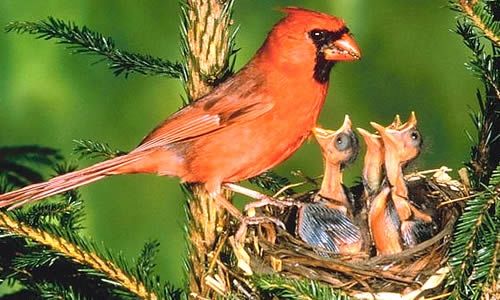
- Difficult to care for fish - most of them belong to the inhabitants of tropical latitudes. For them, you need to create special conditions in the aquarium, again, as similar as possible to the area where they live in nature. Such species rarely breed in captivity, so they are brought from the wild.
For a novice fish breeder, it is better to choose one of the most unpretentious species. In addition to the prospect of not coping with the care of the “capricious” fish, there is a danger of introducing an exotic disease that can harm the rest of the flora and fauna of the aquarium. If you liked the cardinal aquarium fish, carefully read the features, character, feeding, care and breeding of these fish.
Should I start - cardinal? Recommendations when buying fish for the first time
- Aquarium size and shape . It is necessary to decide how large the aquarium can be placed at home. Also, when choosing a place, you need to take into account the needs of future pets: water temperature, lighting and other nuances.
 In the pet store, often the fish are still babies who will grow up, and perhaps they will be cramped.
In the pet store, often the fish are still babies who will grow up, and perhaps they will be cramped. - Fish sizes . The law of nature - the strong eats the weak - also applies to the inhabitants of the water kingdom. Even if the fish is not a predator, but larger in size, it can swallow babies. Smaller fish will always hide and be frightened, sometimes refuse food when there is an individual much larger nearby.
- Character and habits of fish . You need to find out in advance what kind of temperament your pet has. After all, fish have their own kingdom, where they can sometimes jealously defend their territory, show excessive activity or aggressiveness if they are predators. When choosing different species, it is worth making sure that they do not get along well with each other.
- Relationship within a view . Several males of the same species can get along well, without any conflicts, while others, on the contrary, will not be able to calm down until a competitor survives.
 This applies to fighting fish, as well as some types of cichlids. Some breeds live exclusively in a pack, and alone they can simply die.
This applies to fighting fish, as well as some types of cichlids. Some breeds live exclusively in a pack, and alone they can simply die. - How to properly feed . Ask what your favorite fish prefers to eat. Some like to eat dry food, but for carnivores, give only meat or even live food. You need to decide whether you will be able to constantly buy worms, live bloodworms, larvae and other living creatures. And this “food” will need to be stored in the refrigerator, next to your products.
- Proper containment conditions . Each fish, including the cardinal, requires an individual approach, so these nuances need to be clarified in advance. There are species that are really difficult to maintain - both in terms of time and in terms of finances. This species includes Discus. And many well-known Guppies are completely picky and do not require special care. Separate requirements for water, because different breeds of fish live in different water: temperature, hardness, salinity.
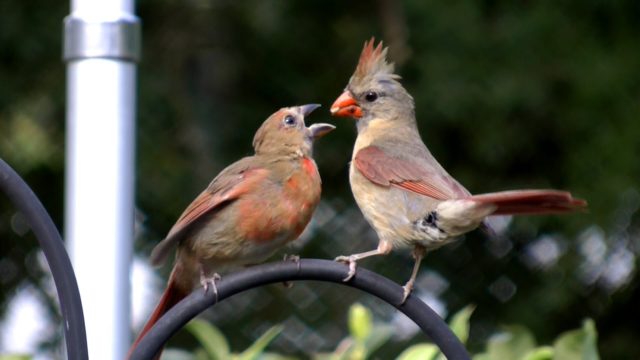 Selected pets can eat the same food and get along well together, however, warm water is required for one, and cooler for the other. As a result, it turns out that the species are still not compatible.
Selected pets can eat the same food and get along well together, however, warm water is required for one, and cooler for the other. As a result, it turns out that the species are still not compatible. - How and where to buy cardinal . Carefully choose the place where you want to buy a cardinal. If this is a pet store, pay attention to the conditions in the room, how the staff cares for the fish, evaluate the reputation of the institution. This will allow you to create an overall impression of the seller and decide whether something is worth buying in this place.
Cardinal fish: content, compatibility, photo-video review
Comfortable water temperature: 22-25 C.
Ph : 6.5-7.0.
Behavior: peaceful.
Cardinal fish compatibility: With all peaceful fish (zebrafish, blackthorns, speckled catfish, ancistrus, neon and other tetras).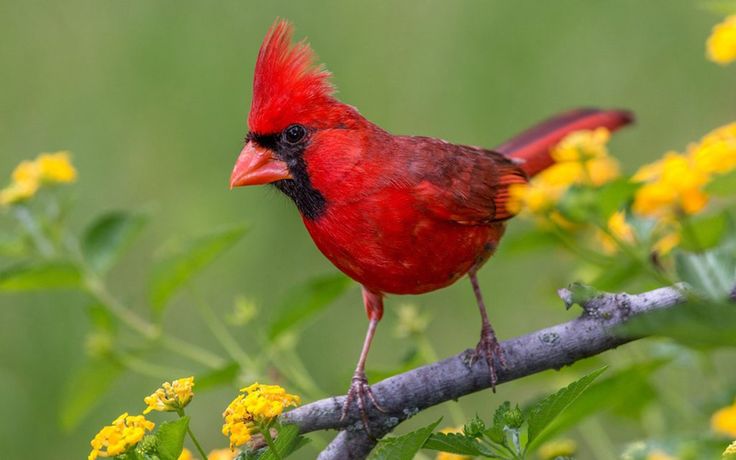
Cardinals live shortly up to 2 years.
Cardinals (lat. Tanichtys albonubes) are schooling, agile, peaceful and unpretentious fish. Despite its small size (no more than 4 cm), this fish has a large number of admirers for its bright expressive coloring. The body is elongated, slender, slightly flattened from the sides in the front. Upper mouth. The back of the fish is light green, the belly is white. A bright light green or very light pink stripe runs along the entire body, which is comparable in brilliance to the brightness of neon stripes. The middle of the caudal fin is bright red with a black spot at the base. The back of the body is reddish. The dorsal fin is also red, the anal fin is lemon yellow fading to red.
In fact, the cardinals are similar in appearance to the neon, and some fans consider these fish to be relatives. But, as you know, there is no relationship between them. Cardinals - cyprinids, neons - haracins. An amazing whim of nature - such a resemblance. Even territorially, these fish are very far from each other. The habitat of neons is the reservoirs of South America, the cardinals live in the reservoirs of China.
Even territorially, these fish are very far from each other. The habitat of neons is the reservoirs of South America, the cardinals live in the reservoirs of China.
The name "cardinal" was chosen as a commercial brand by dealers (to increase sales). The name got into Russian literature when translating books on aquarism from German. In the English and Chinese versions, these fish are named after their habitat in China: "minnow of the mountains of white clouds." Then they began to be sold under various brand names, they were called Cantonese or Chinese zebrafish, false neon and cardinal. In China itself, these fish are known as the "Guangdong minnow" or "minnow of the mountain of white clouds."
Cardinals - a mobile species, living more in the middle layers of water. Males in the pre-spawning period can become territorial and "divide" the aquarium into zones of influence.
The conditions for keeping and caring for the cardinals are simple. The fish is ideal for not very experienced aquarists.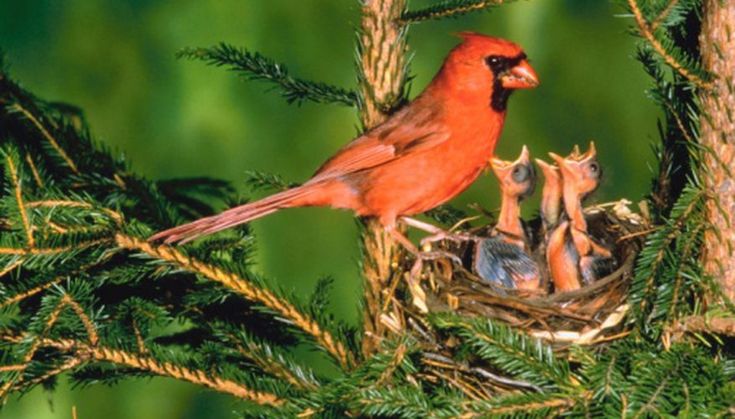 It is better to choose an aquarium from 40 liters, and preferably more spacious. Elongated rather than square or tall is most suitable. A flock of cardinals looks especially impressive in a spacious herbal aquarium. Water for keeping cardinals: dH up to 20; pH 6.5-7.0; t 22-25 C. An aquarium with cardinals must have good filtration and aeration. This will ensure the absence of nitrogenous poisons in the water. As for any other fish, a high concentration of poisons is unacceptable for cardinals: ammonia, nitrites and nitrates .
It is better to choose an aquarium from 40 liters, and preferably more spacious. Elongated rather than square or tall is most suitable. A flock of cardinals looks especially impressive in a spacious herbal aquarium. Water for keeping cardinals: dH up to 20; pH 6.5-7.0; t 22-25 C. An aquarium with cardinals must have good filtration and aeration. This will ensure the absence of nitrogenous poisons in the water. As for any other fish, a high concentration of poisons is unacceptable for cardinals: ammonia, nitrites and nitrates .
Every conscientious aquarist should always have a set of drop tests at hand, at least for nitrate and phosphate. Fortunately, they have now become inexpensive, there are no problems with their assortment and acquisition. For example, we can in good conscience recommend you the cool drip tests UHE tested on ourselves, but they are sold only online. In the stores of your city - offline, you can find inexpensive Vladox 9 tests0067 .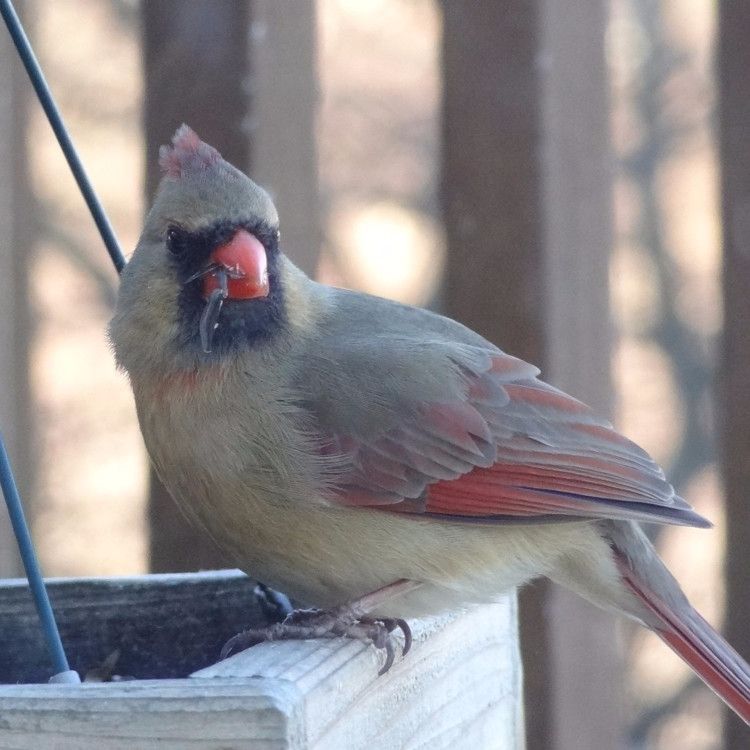 Watch your friends for nitrogenous compounds, keep them in check and everything will be with you and your pets in a bunch.
Watch your friends for nitrogenous compounds, keep them in check and everything will be with you and your pets in a bunch.
It would be useful for deep water changes - clean water supply, to use preparations that neutralize harmful substances. For example, Tetra AquaSafe - it removes chlorine compounds, heavy metals + contains B vitamins, iodine and other aquarium treats.
cardinal fish photo
Cardinals are absolutely unpretentious in feeding. The only caveat is that the food for them should be small and slowly sinking. This is due to their small mouth and the fact that they prefer to take food from the surface of the water.
We recommend for cardinals to take food from the Tetra MicroFood series, namely chips. In our opinion, the perfect food for these fast babies. The chips are small and sink very slowly into the water. Due to this, the fish have time to shake everything and fill their tummies to the top.
It should be noted that when buying any dry food, you should pay attention to the date of its manufacture and shelf life, try not to buy feed by weight, and also store food in a closed state - this will help to avoid the development of pathogenic flora in it.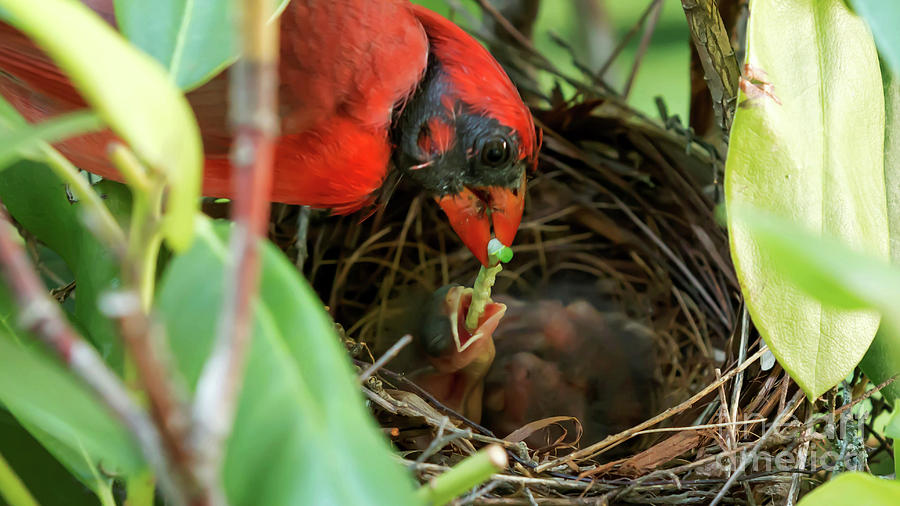
Breeding Cardinals is fairly easy. Fresh water is poured into a 10-20 l non-breeding aquarium, several bunches of plants are placed, a sprayer is installed and a group or pair of fish is planted. The ratio of males and females can be any, but the predominance of females is better. Dilution water: dH up to 10; pH 6.5-7.0; t 24-26 С.
Spawners are kept in spawning grounds for 10-15 days and fed abundantly with live food. The female lays several eggs daily. Producers usually do not eat caviar and fry. When floating fry appear, the producers are transferred to another spawning ground, and in the first they begin to feed the fry.
Starter food - rotifers, cyclops nauplii, ciliates, mashed egg yolk or just mashed dry food.
Cardinals can be bred in another way. Previously, they are seated for one week and fed plentifully. Then they are placed in a spawning ground for 3-4 days and again seated. This can be repeated 3-4 times.










